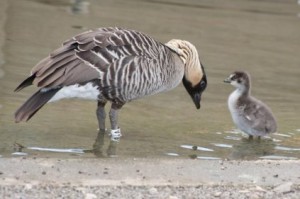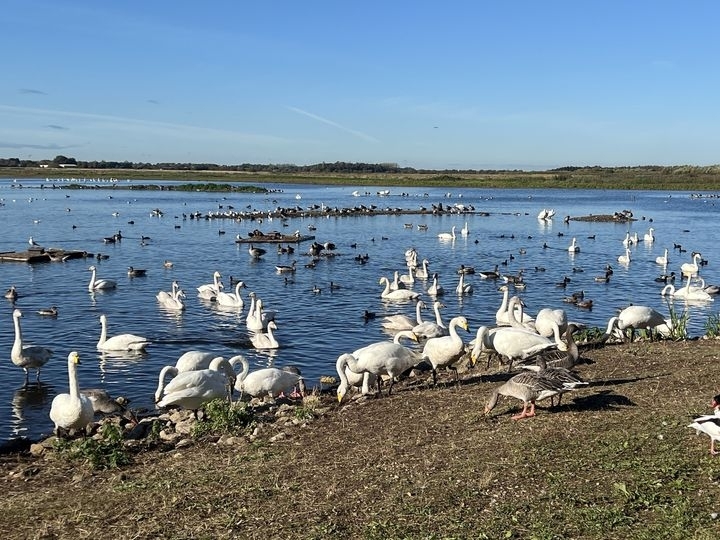Goslings born at WWT Martin Mere Wetland Centre heralding the start of spring
 WWT Martin Mere is heralding the start of spring and downy duckling season with four nene goslings being born. The Nene is well known at the Centre for being one of the birds that will actually take bird food from the hand and is an enjoyable attraction for children and adults.
WWT Martin Mere is heralding the start of spring and downy duckling season with four nene goslings being born. The Nene is well known at the Centre for being one of the birds that will actually take bird food from the hand and is an enjoyable attraction for children and adults.
The Hawaiian Goose represents WWT's greatest conservation success story by breeding the birds in captivity and releasing them in the wild. The reintroduction programme started at Martin Mere in the 1980s when just three eggs were delivered to the Centre and there are now approximately 60 Hawaiian Geese in the grounds.
The gosling, born on Thursday 24 March, just in time for Easter holidays, can currently be seen wandering around by Swan Lake with their parents, and it has already attracted a lot of attention from families visiting the Centre. As we enter April, there should soon be plenty of ducklings around the Centre for everyone to enjoy.
Centre Manager, Andy Wooldridge, said: “With having such a harsh winter, the birds are laying their eggs slightly later than usual but I am pleased that duckling season has finally begun. It is always a joy to see the goslings. We are really hopeful for a successful breeding season this year.”
In addition to the goslings, Martin Mere will be officially opening their brand new canoe safari attraction and new woodland play area on Monday 11 April.
Sometimes known as Lava Geese, Nene’s are the only waterfowl adapted for life on lava flows. An estimated 25,000 Nene’s used to inhabit the Hawaiian islands, but following the arrival of Europeans in 1778 their numbers immediately began to decline. The introduction of the mongoose in 1883 then seemed to seal their fate as it prayed voraciously on eggs, chicks and adults alike.
By 1907, the Nene was recognised as a protected species, but this seemed too little too late and only 20 or 30 birds survived by 1949. A major re-introduction programme was launched which saw Sir Peter Scott bring over two of the only remaining Nene’s in the world from Hawaii, then WWT went on to release more than 200 of them back to the wild over the years helping to save the Nene from extinction.



